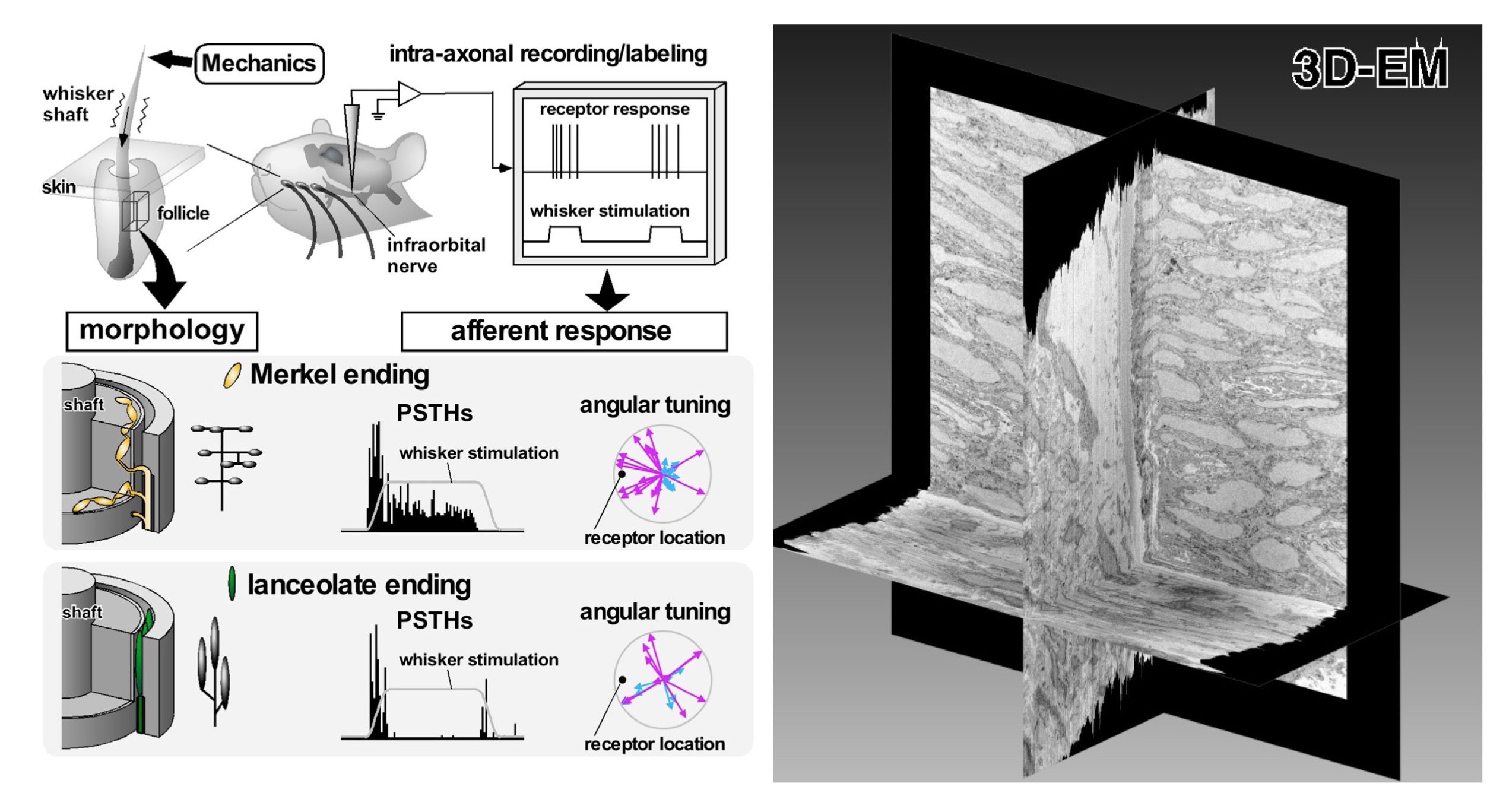The main senses for humans and animals to perceive the outside world are traditionally called "five senses" and include sight, hearing, taste, smell, and touch. Among them, the mechanism for converting tactile information into neural activity had many unclear points because experiments were difficult. This time, the collaborative research team led by Dr. Takahiro Furuta of Osaka University was able to conduct detailed tactile experiments by targeting the rat vibrissal sensory system, and was clarify the role of nerve ending receptors in converting tactile information into neural activity.
The rat's whisker is a very good tactile sensor. The rats can avoid obstacles and route in the dark by touching the surroundings with the whisker. At the base of the whisker (follicle), peripheral nerve terminal receptors that convert mechanical input into neural activity are neatly arranged and are classified into several types according to morphological characteristics. In this study, we performed multiple experiments to press the whisker while recording activity from one of the peripheral nerves that carry the sensation of the whisker, and examined the response characteristics of each of the peripheral nerves. In addition, we performed experiments to visualize the recorded nerve morphology, and clarified the relationship between its response characteristics and morphological characteristics.
Of the four types of ending receptors we focused on, only the type called Merkel endings located in the middle of the whisker follicle is active continuously while pushing the whisker, and the other types are active only at the moment of pressing and releasing. For each recorded nerve, we examined the relationship between the direction of the stimulus that caused a strong response and the position where the receptor was located, and found that the Merkel endings responded strongly when the whisker was pushed in the direction where the receptor was present. Simulations of this result suggest that the force in the " direction of whisker tilting" of the force transmitted to the base of the whisker affects the Merkel ending, and that the pushing force affects other types. At NIPS, we performed a three-dimensional electron microscopic analysis of the whisker follicles using SBF-SEM, and were able to corroborate these differences in characteristics between receptor types based on their morphology and localization.
The results of this study not only greatly contribute to understanding the overall mechanism of tactile sensation, but can also be extended to the field of active sensing because the mouse moves the whisker and touches the surroundings with the whisker.

Figure 1 Experimental procedures (left) and 3D EM image by SBF-SEM (right).
Takahiro Furuta (Osaka Univ. at present, Kyoto Univ.)
Mitra J.Z. Hartmann (Northwestern Univ.)
Naoyhiki Miyazaki (Univ Tsukuba at present), Kazuyoshi Murata (NIPS)
KAKENHI (JSPS), NIH grant, NIPS Collaborative Study Program
Title: The Cellular and Mechanical Basis for Response Characteristics of Identified Primary Afferents in the Rat Vibrissal System
Authors: Takahiro Furuta, Nicholas E. Bush, Anne En-Tzu Yang, Satomi Ebara, Naoyuki Miyazaki, Kazuyoshi Murata, Daichi Hirai, Ken-ichi Shibata, Mitra J.Z. Hartmann
Journal: Current Biology
Issue: 30, 1-12
Date: Jan 31, 2020
URL: https://www.cell.com/current-biology/fulltext/S0960-9822(19)31701-4
DOI: https://doi.org/10.1016/j.cub.2019.12.068